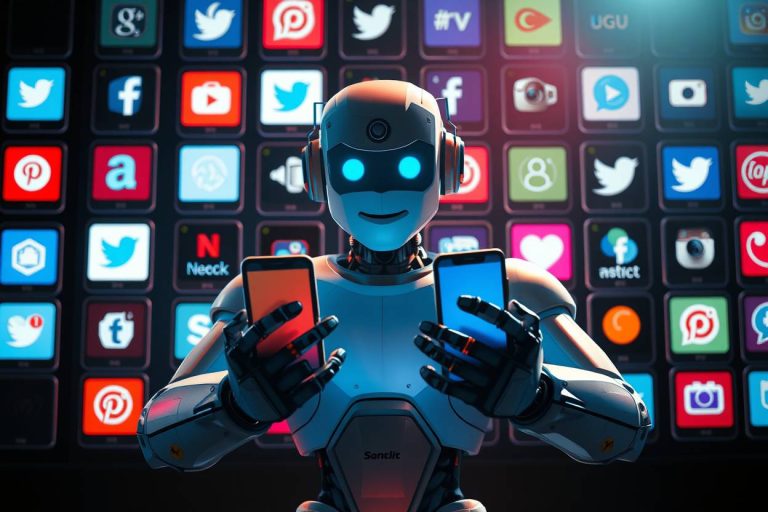What Is AI Copywriting? Your smartest assistant, not your replacement

The rise of AI tools has sparked endless debates in creative industries. From digital art to songwriting — and yes, even to content creation — artificial intelligence is changing how we work. But when it comes to writing compelling, persuasive copy, the question still stands: what is AI copywriting, and can machines truly replace human creativity?
The short answer? Not quite. Not if you want to create content that ranks, connects, and converts.
While AI can be a helpful tool, it’s no substitute for the nuance, tone, and strategy that come from working with professionals who understand the craft. If you’re looking for high-quality, human-written content that actually delivers results, it’s worth turning to proven copywriting services like Get A Copywriter — where real people create real impact.
Let’s explore what AI copywriting really is, how it works, how Google views AI-generated content, and — perhaps most importantly — why human input is still absolutely essential.
What Is AI Copywriting
What is AI copywriting? AI copywriting refers to the use of artificial intelligence — usually large language models like ChatGPT — to help generate written content. Notice the word help. That’s key here. Despite what some flashy sales pages might suggest, copywriting AI isn’t a magic bullet. It’s more like a very fast, reasonably clever assistant who has read the entire internet, but doesn’t always know what day it is.
You might think: “Okay, but if the AI can write thousands of words in minutes, why do I need a human copywriter at all?” Good question. The short answer? Quality. The long answer? Google. Let’s unpack both.
AI can spit out content fast — scarily fast sometimes. You give it a prompt, and seconds later, you’ve got a paragraph (or ten) that sort of make sense. It feels like cheating. It feels like the future. But spend enough time with it, and you start noticing cracks. It repeats itself. It speaks in generalities. It lacks edge. Nuance. That thing you feel when a human voice really connects with you. That’s no accident — that’s the human part.
So, what is copywriting with AI really about, then? It’s about working with the tool, not letting the tool work instead of you. Think of it like driving a race car. The engine might be powerful, but you still need a driver who knows when to brake, when to accelerate, and when to drift on a sharp turn. AI doesn’t know your brand. It doesn’t know your tone of voice. It doesn’t understand subtext, humor, sarcasm, or cultural nuance the way a seasoned writer does.
The Role of the Human Voice in AI-Generated Content
Here’s where it gets interesting. You’ve probably noticed it — that unmistakable AI tone. Polite. Predictable. Overly balanced, like it’s trying not to offend anyone. It’s the voice of someone who read a billion articles and tried to sound like all of them at once. Which is… fine. But not memorable.
That’s why the human voice matters more than ever. It cuts through. It surprises. It contradicts itself sometimes, gets emotional, even rambles a little — and that’s what makes it real. That’s what makes people listen.
AI can mimic tone, but it can’t live in it. It doesn’t know the weight of a sentence that carries bad news. It doesn’t laugh when a metaphor lands just right. It doesn’t get that writing for real people means saying things a little differently than a grammar textbook would prefer. That’s why every piece of artificial intelligence copywriting still needs a writer — a real one — to breathe life into it.
Take brand voice, for example. Some brands are witty. Others are plainspoken. Some need to sound luxurious. Others thrive on being scrappy and raw. AI can learn tone markers, sure, but it won’t truly feel the brand. It won’t choose that slightly weird phrase that ends up sticking in someone’s brain. That’s a human call. Always.
And readers can tell. More than we think. We’re all fluent in tone, even if we don’t realize it. We know when something feels human and when it feels like a robot wearing a human mask. So if you want your content to resonate — not just rank — your voice has to be in there. Somewhere. Otherwise, copywriting AI just becomes background noise.
Google’s Take on Artificial Intelligence Copywriting

Now, let’s talk about the big question everyone’s afraid to ask out loud: Will Google punish me for using AI to write content?
It’s a fair concern. After all, if you’re investing in content, especially for SEO, you want it to show up — not disappear into the algorithmic abyss. So here’s the good news: Google doesn’t hate AI. It hates bad content. That’s an important distinction.
Google’s official stance is surprisingly reasonable. They’ve said — more than once — that they care more about the quality of content than how it was created. Whether it’s written by a human or AI copywriter, what matters is this: is the content helpful? Is it original? Does it show expertise, experience, authoritativeness, and trustworthiness (you know — E-E-A-T)? If not, it won’t rank. Simple as that.
Here’s where it gets tricky, though. AI content often sounds fine on the surface — clean, structured, full of keywords. But dig a little deeper, and you’ll find fluff. Vagueness. Empty phrases stacked on top of more empty phrases. And that’s exactly what Google is training its algorithms to detect.
Editing matters. Human review matters. Adding insights, correcting inaccuracies, trimming the fat — that’s what turns AI-assisted writing into something Google can respect. Not because it’s human-written per se, but because it’s actually useful.
Another thing: AI can’t fact-check itself. It doesn’t know what’s true or false. It’ll tell you that Canada has pyramids if you prompt it the wrong way. So publishing artificial intelligence copywriting without editorial oversight? That’s a fast way to lose both rankings and credibility.
Bottom line — Google isn’t the enemy of AI. But it’s definitely not going to reward laziness. Treat AI like a research assistant, not a final editor, and you’ll stay on the right side of the algorithm.
Real-World Scenarios Where AI Helps (But Doesn’t Replace)
Say you need ten variations of a product description. Or you’re brainstorming headlines for a landing page. Or maybe you’re trying to explain something technical in a way your audience will actually understand. In moments like that, copywriting AI can be a lifesaver — not because it’s brilliant, but because it gets the gears turning.
Take customer emails, for instance. AI can generate templates, tone suggestions, even rewrite your draft to sound more confident or more empathetic. Is it perfect? No. But it gets you out of neutral.
Another great use case: outlines. If you’re creating a long-form blog post or white paper, AI can help map the structure. It might not nail the logic every time, but it gives you a scaffolding — something to build on. That’s huge. Especially when you’re juggling multiple projects and the pressure to be creative now feels crushing.
And let’s not forget localization. Need the same web copy translated and adapted for five different markets? AI can give you a solid base to work from — a draft that a native-speaking editor can then finesse. Without AI, that process takes days. With it, you’re halfway there in an afternoon.
But here’s the catch — in every single one of those examples, a human still needs to step in. Because the AI doesn’t know if what it wrote is factually true, legally compliant, emotionally resonant, or even appropriate. It doesn’t know your customer. It doesn’t feel your brand.
That’s why the question isn’t “can AI replace writers?” It’s “how can writers use AI without losing their edge?” And the answer is: by treating it like a co-pilot, not a chauffeur.
So if you’ve ever wondered what is copywriting with AI, the real answer lies in that collaboration. The AI gets you to draft zero. You get it to draft one. And two. And three. Until it sounds like you, not a robot trying to pass the Turing test.
The Future of AI Copywriting Is Human-Led
So where is all this heading? Will AI keep getting better? Definitely. Will it start writing better content than some humans? In certain contexts, maybe it already does. But the real future — the sustainable, honest, brand-safe future — is human-led.
Because no matter how fast these tools evolve, they’re still tools. They don’t know what it’s like to struggle through a creative block, or to rewrite a sentence ten times just to land the perfect rhythm. They don’t grow up with cultural references, gut feelings, lived experience. That stuff matters. It’s what makes writing feel alive.
What is AI copywriting going forward? It’s not about replacing writers. It’s about freeing them. Giving them room to think, to ideate, to refine — instead of burning time on repetitive drafts or endless rewordings. With AI, a good writer becomes faster. A great writer becomes dangerous.
And look — audiences are changing too. People are savvier. They know when content is real, and when it’s been pumped out by a machine. You can feel it in the tone. In the detail. In the presence of a real point of view. That’s where trust lives. That’s where brand loyalty grows.
So yes, the smart move isn’t to ignore artificial intelligence copywriting — it’s to master it. But always with one hand on the keyboard and the other on your own voice. Learn how to use it without losing yourself in it.
The future of copywriting AI isn’t robotic. It’s hybrid. It’s a partnership between smart tools and even smarter humans. The writer still leads. The AI just helps carry the weight.
And that? That’s not the end of creativity. That’s a whole new chapter.




